Update 8 – Final
Click on the image below for a short video of our Escape from Lukla! 
16th November, 2011 – Wednesday
 Stuck in Lukla
 All day yesterday we hiked in thick fog, sometimes in a fine drizzle. It was quite cold, and we were concerned about our flight from Lukla to Kathmandu the next day. Lukla is a small, but vibrant town literally hanging on the side of the Himalayas here. The airstrip at Lukla is considered the most dangerous in the world. We could not really tell why because, even though it was still early afternoon when we arrived, the fog was so thick that one could barely see 100 feet.
The single cobblestone street of Lukla was lined with shops, restaurants, and even a Starbucks knock-off. Porters, donkeys and Yak caravans came down the street as we entered this village at almost 9,300 ft.
We settled into our rooms at the Kumbu Lodge, and met a number of climbers who had been stuck here for two or three days already, with no sign of a possible departure in the next few days.
I spent the day editing my videos, and posting my Everest Base Camp update 7.
The rooms in this guesthouse were quite a surprise. We had a view of the landing strip and the mountains towering over the town. Only, we could not see it because of the thick fog.
As we crawled in to go to sleep under two very heavy, thick blankets, a wonderful diversion from our sleeping bags the past 12 days, Kent said, “This hotel gets it!â€
There was an on-suite bathroom with toilet, hand basin and shower. Only problem – no hot water in the hand basin. Another problem – no water in the shower at all – hot or cold. But this was the first time since Kathmandu that we did not have to go down the hall to use the bathroom in the freezing cold, dark night.
Of course, that is not really a problem, since I kept a one-liter Nalgene water bottle inside my sleeping bag to use as a pee bottle during the night. In order to stay hydrated, one consumes huge quantities of water during the day, resulting in huge quantities of pee during the night, often a liter and a half. The nights were very cold – invariably below freezing, and these lodges were not heated. Hence the need to pee in your sleeping bag into the pee bottle.  While it requires some talent, I perfected this skill on Kilimanjaro three years ago, and had no problem with this trick. Anyway, it was a wide-necked Nalgene bottle.
 17th November 2011 – Thursday – Day 13
Still Stuck in Lukla – Killing a day in Lukla
Our second day stuck in Lukla. There is no indication of an improvement in the weather until Sunday, the day we are supposed to leave Kathmandu for New Delhi and on to the USA. We are concerned, but the one thing that walking, climbing, suffering during the past 13 days have done for me was to teach me that checking the weather forecast is not going to change it. I have learned acceptance and patience. I actually enjoyed the down time, and the opportunity to re-live the adventure through editing my videos.
At lunch we went out for a change of scenery – and cuisine. We ended up in a restaurant a few buildings down from the Rhumba lodge, and ordered a hamburger. The picture on the menu depicting the hamburger as the “Special of the Day†looked so attractive; all four of us ordered this.  About 20 minutes later the waitress returned to apologize profusely that they have no hamburger, but would we like a chicken burger?
How could they be out of hamburger and still list that as the special of the day, we wondered? Half an hour later she showed up with our chicken burgers, which were essentially a very thin strip of what looked like chicken spam, and a lot of raw onions on a bun. So tired of noodles and rice, we ate this offering quite disappointed that we were not eating the juicy, tasty hamburger depicted on their menu picture.
On our way back to the teahouse, we met Ramesh. “Have you had lunch?’ he asked. “Yes, thank youâ€, I said. “You are not supposed to eat lunch away from Kumbu Resortâ€, he reprimanded. “They will double your room rate!â€Â “Oh,†I said. “Actually we skipped lunch.â€Â That was not entirely untrue. I did not think one could call a chicken spam and onion sandwich lunch.
Later we went for an afternoon walk, and ended up in the Irish Pub, meeting some very interesting adventurers from New Zealand.
After dinner we went to bed, quite discouraged since the weather forecast for Lukla remained bleak. It was bitterly cold, and a warm shower to wash the dirt fro the past days off one’s body would have been nice. I determined that the first thing I would do when we eventually reach Kathmandu is to take a hot shower.
18th November, 2011 – Friday – Day 14
Four Cold Showers in Kathmandu
At 7 am. Ramesh knocked on our door. I let him in.
“Take a picture, take a picture!â€
He opened the curtains and the completely frozen window, and there, right outside our window, was the most beautiful sight of the mountains surrounding Lukla, towering clear up to the sky, and not a cloud in sight. Very excited about the possibility of getting out today, we jumped up and went to the dining room for breakfast.
Our table companions, six travelers from Australia, were all excited because they were able to get six seats on a huge Russian helicopter with the obnoxious French people at the next table over, supposedly leaving right away. They were all packed and ready, anxious to make their international flight from Kathmandu. After waiting patiently for almost two hours, their guide suddenly rushed into the dining room where we were all congregated hoping to get a flight out, and in a huge panic rushed them out the door and on to the landing strip (“airportâ€).
Ramesh, our guide, assured us that we would get out today or tomorrow.  “But we can’t be certain because the weather may change again any timeâ€, he added.
We agreed that it would be prudent to also try to arrange a helicopter, since we were already stuck in Lukla for three days. So we instructed Ramesh to get us on either a small plane or helicopter, whichever became available first.
The Lukla airstrip was chaos. The planes they use to fly in-and out are very flimsy looking 10 to 20 seaters. To help pass the time, Roger, Pete and I stood for several hours at the top of the landing strip to watch the constant flow of airplanes and helicopters come and go.
Until just over 40 years ago the eastern Himalayan region of the Solukhumbu leading to Mt. Everest was inaccessible to most air traffic. The way to reach the heights of the trail head in Lukla was to travel the road from Kathmandu to Jiri, then hike five days over the rugged lowland hills. In 1964 Sir Edmund Hillary initiated construction of the Lukla airfield (LUA), and from that time the area has been opened up to countless enthused hikers, assuming the weather is conducive to landing or taking off from this dangerous mountain airstrip. Â It is a great convenience to bypass the arduous hike beyond Jiri since it the hike beyond Lukla is challenging enough for most. Lukla is now a vibrant and welcoming entryway to the Himalayas.
We went back to the Kumbu Lodge for lunch. No sooner had we ordered or Ramesh came running in shouting, “we must go immediately.â€Â We have four seats on a helicopter about to land.
I was sorry to forego the chicken chili I ordered, but we literally ran to our rooms, grabbed our backpacks, and trotted off to the airport. We were bundled into a seven-seater along with five other people – yes, nine of us! – and took off without even had the opportunity for a proper goodbye to Ramesh. That saddened me some, because for the past 14 days I have relied on this young man for my safety and well being every day.
Taking a short break earlier on in the trek, Ramesh and I discussed our families. I discovered that he was the same age as my son, Thomas. From that day on we addressed each other as “my son†and “my fatherâ€. There was much more than some levity to that. We truly bonded, and I will forever be grateful to this remarkable young man for helping and guiding me through this pinnacle lifetime experience.
I was sitting in the co-pilot’s seat, hoping to get some good video of the mountains below. We were flying at about 6,700 m. (almost 22,000 ft.) according to the Altimeter in the instrument panel. Suddenly the ‘copter took a sharp left, then a sharp right, and descended rapidly to land on a plateau with several buildings at what looked like a military installation. We were asked to get out, and another group of eight took our seats.
“What’s going on?†I asked our pilot.
“You must wait here,†he said.
Wait here? We were only a half hour into the flight, and had no idea where we were, or if the helicopter would ever come back for us!
We sat around for a long time as we watch the dark, ominous clouds come in over the mountaintop, concerned that the weather might change to where the helicopter may not be ABLE to return, even if their intentions were to do so. Amazing how the experience of the past two weeks have taught us to accept, and not panic over things we could not control.
After what seemed like a long time, the chopper appeared over the mountaintop, landed, and took us to Kathmandu. After landing I said, “I am not sure which was the greater adventure; climbing to Everest Base Camp and summitting Kala Patthar, or getting from Kathmandu to the mountains and back!â€
What a lovely sight to see the smog and pollution-filled air over the slums of Kathmandu as we glided in the noisy helicopter over the city to the heliport! I never would have thought I’d RELISH that view!. Unceremoniously our backpacks were thrown on the back of a pick-up truck. We piled on top, and were transported the three miles to the main terminal to take a “taxi” back to Katmandu.
By now we knew the route, and reminded each other of the familiar sites as we pass the Bazaar on the left, the Royal Palace on the right (we once again recalled the massacre in the palace just two years ago), the Ministry of education, the slums om Kathmandu and on into the Thamel district. It was a familiar experience for us, this trip crammed into a very tiny minivan, fighting the unbelievable chaos of the Kathmandu traffic with the cacophony of scooters, motorcycles and cars revving their engines and hooting their horns incessantly, all the while spewing fumes into the air which affected us now so much more than when we were here before. Most of us had developed some annoying respiratory problems. My annoying head cold and running nose have now settled in my upper chest, and couching was extremely painful. The air in Kathmandu did not help any.
We arrived at the Hotel Marsyangdi Mandala at the edge of the Thamel district of Kathmandu. A very nice place, and I was more than anything looking forward to a hot shower, and maybe even a shave. I know how Katie hates facial hair!
During the time we were stranded in Kathmandu almost three weeks before, waiting for a break in the weather, I took three cold showers. The other trekkers all seemed to have hot water, except me. Three times, three days in a row I jumped into the cold water to get cleaned.
On the mountain, on Day 3 in Namche Bazaar, we were able to take a hot shower. It was in a dirty little room, with a small gas water heater stuck on a wall, ejecting a small, weak, but welcome stream of hot water into the near-freezing room. On the way down on day 9, last Saturday, almost a week ago, we were able to enjoy that little shower again. Oh, how I wallowed in those drops of hot water coming from that small heater!
Now, here we were at a nice hotel in Kathmandu, with a real shower in the bathroom, and water coming out of ALL fawcets. With great anticipation I took off my smelly clothes, boots and socks, turned the water on, and waited.
This afternoon I took my fourth cold shower in Kathmandu!
Dinner was at the Everest Steak House in Thamel, and then we went for a beer at the Rum Doodle Pub. This pub is world famous. Here, many Everest Summit as well as Base Camp expeditions started and finished. Hundreds of inscriptions adorned the walls and ceilings, and the place was packed with adventurers. It was gratifying to know that we had accomplished this lofty goal also. I was tempted to add Kent and my names to the hundreds, but thought no one would ever notice our names among the large number of inscriptions.
IÂ was satisfied in the knowledge that we are in that small percentage of humanity who has had the privilege to reach Everest Base Camp.
19th November, 2011 – Saturday
We had the day free in Kathmandu, and Ram Pahari’s Himalaya Journeys’ tour guide took us for historical monuments sightseeing in Kathmandu valley.
We visited the oldest Buddhist shrine and stupa in the world, on a mountaintop high above the smog-filled Kathmandu valley, with the bustling city of Kathmandu barely visible through the haze of exhaust fumes and pollusion. We next witnessed several cremations on a sacred river at a Hindu Temple, and after lunch visited the largest Stupa in the world. We were very tired today, no doubt coming down from the incredible adventure we had experienced. After a lovely Nepalese dinner hosted for us by Ram, we retired early for a good night’s sleep before our journey back to the good ol’ USA.
We missed our friends, Kathy and Al Wilson. We are thankful that Al recovered from the AMS, and that they made it back safely to Indianapolis.
I am thankful for renewing the old friendships with Kathy and Al, and just as grateful for the new friendships the four of us, Pete, Roger, Kent and I forged during this adventure. Roger, Pete, Kent and I supported each other daily throughout this trek. I am so very grateful to Kent who gave me the moral support to complete the adventure by reaching the goal: Mt. Everest Base Camp and summiting Kala Patthar.
I am grateful for Ram Pahari, Himalaya Journey Treks & Expedition who made all the arrangements, and who stepped in time-and-again as circumstances changed, sometimes working THREE cell phones at once, talking with helicopter and airline offices and hotels at the same time as we stood in the chaotic parking area of the Kathmandu airport, and who eventually made everything work out for us.
I am grateful forShiva Katuwel, Tika Basnet, and Bal Kumar Basnet, our porters. How these small, tough Nepalese were able to negotiate the difficult climbs with our extra backpacks as well as their own, astounds me. They became much more than porters, they became our friends and compatriots.
And my Nepalese son, Ramesh Kharel. So young and so competent. Reminds me of my own son.
My sincere thanks to my team at Grové Financial Group of UBS in Columbus, Ohio. I hope you know how much I appreciate each one of you, as you continued to take care of our valuable client relationships in the US while I was doing this Walkabout.
A final thanks to my family – Katie, who never hesitated when I said I wanted to climb Kilimanjaro, or trek to Everest Base Camp, and who, along with Tommy and Yuki and Jessica and Dan, supported me all the way. I miss you all, and particularly my two grandsons, Ryusei in Saigon and Gavin in New York.
 See you in Columbus on Monday afternoon!
-o0o-
Our Outfitter for this Adventure
Himalaya Journey Treks & Expedition Pvt. Ltd.
P.O.Box No:- 21235 Thamel, Katmandu , Nepal .
Tel:977-1-4383184 , 4386585
Mobile:- 977-9851007829
Fax:- 977-1-4415679
E-mail:- himjourney@mail.com.np
Web site: www.himalayajourneys.com

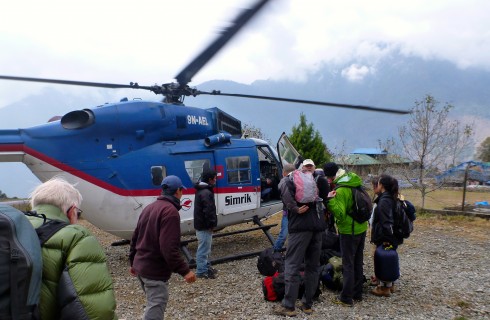
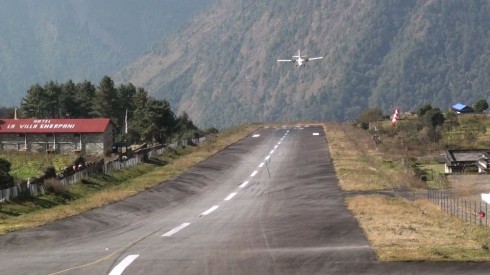
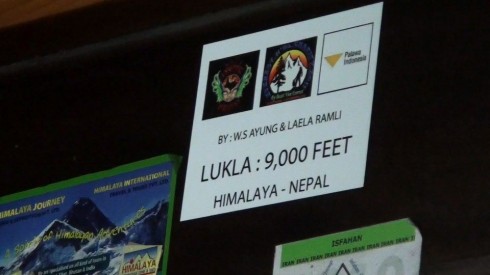
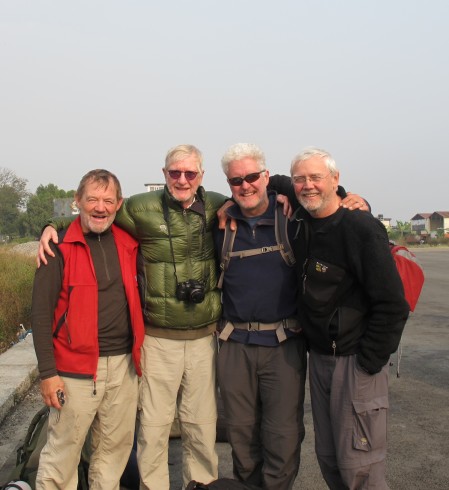
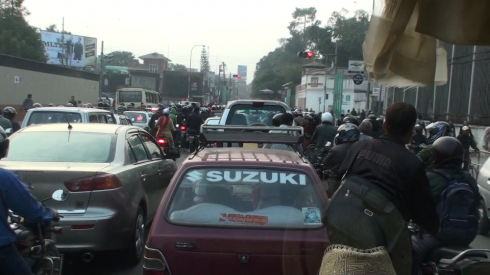

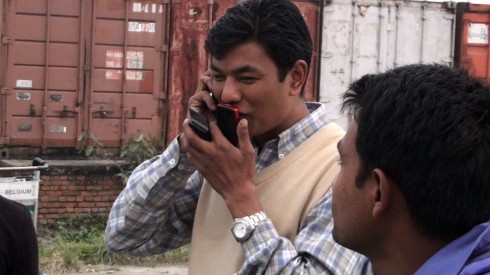
Congratulations again! I am so glad you are going to be home soon for a hot shower — looking forward to seeing you next week.
Wow! I am in tears after reading this beautiful essay of your incredible , life-changing adventure! We are all so proud of you back here. I’ll say it again: You are an inspiration.
Very impressive adventure!
The adventure of a life time. I agree after reading your journal, the most difficult part may have been leaving. I can only imagine the stories you have to tell.